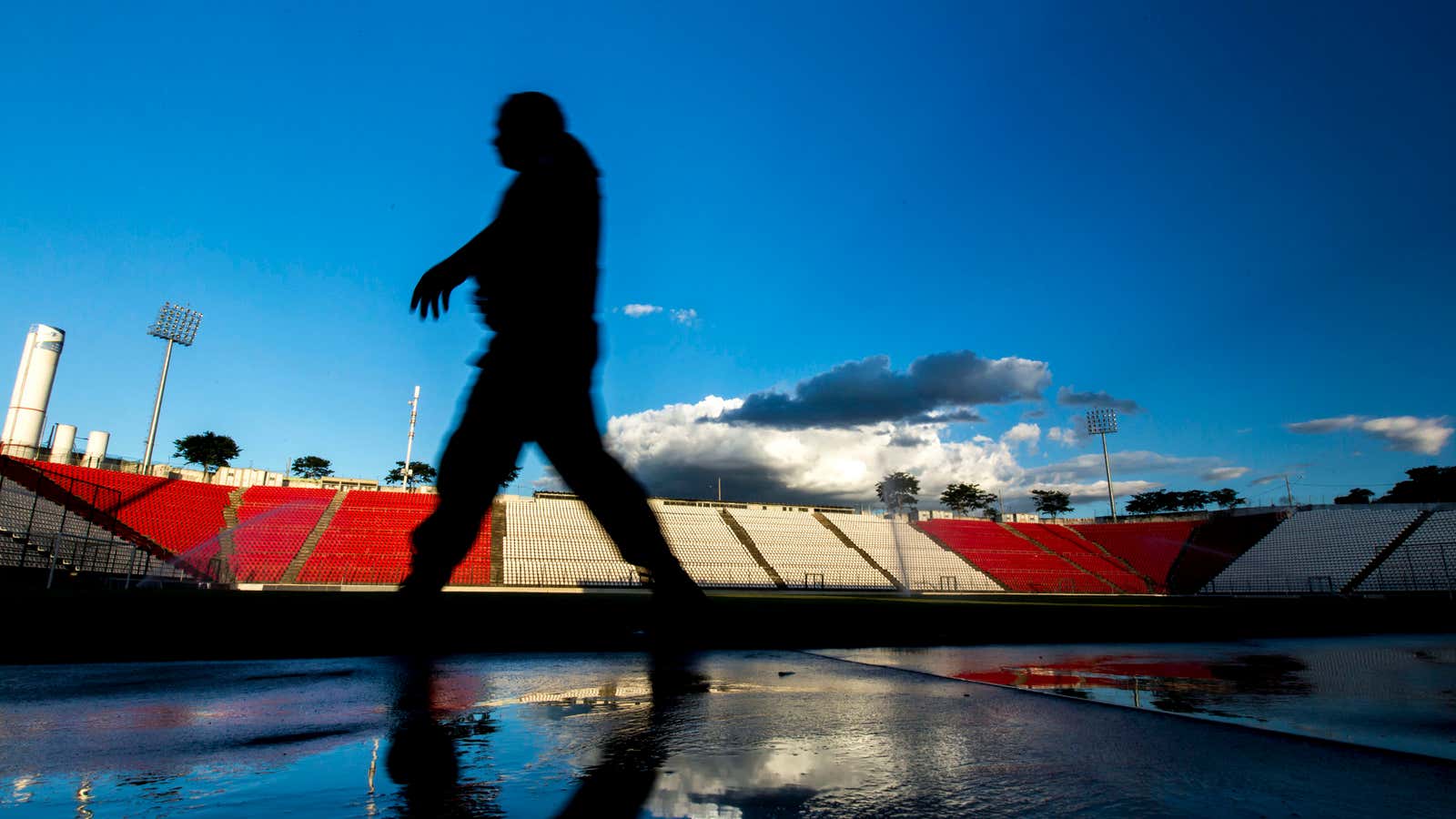If you’re an obese citizen of Brazil, you can get a discounted ticket to a World Cup game—and a complimentary one for your companion. The construction of a number of double-wide seats in FIFA stadiums comes as no surprise. After all, around half of the adult population of Brazil is now classified as overweight, and over 15% are obese. But why are those with body mass indexes (BMI) of 30 or more getting cheaper passes to a coveted sporting event? Because Brazil puts obese individuals in the same category as the elderly and those in wheelchairs.
Often, one could argue, obese people aren’t shown enough consideration for their health and social needs: Nearly 70% of US adults are overweight, and over a third are obese, but a recent study of obese Americans found that more than half felt they’d faced discrimination and stigma because of their weight.
The most widely publicized issue for the obese is air travel. Most US airlines now call for large passengers to purchase two tickets to fly. European airplane maker Airbus recently designed a jet with coach seating to accommodate overweight passengers (with a slightly wider aisle seat and slightly narrower window seats), but airlines weren’t interested in offering the seats, even for additional fees. “Giving one customer a 20-inch seat at the cost of two other customers having their seat width reduced is not what we want,” a JetBlue spokesman told the Wall Street Journal.
At the other end of the spectrum, Brazilian law considers obesity a disability, and includes it in the list of circumstances that warrant special access to tickets. The World Cup Bill requires that at least 1% of seats in every stadium are offered first to those with disabilities, and FIFA has complied by making sure that a certain number of those seats will accommodate the extra-wide. But while this law means obese soccer fans can get a price cut if they present proof of their BMI, the extra-wide seats represent only a small portion of those set aside for people with special needs. Of the 12 arenas built for the event, the only one to announce its extra-wide seat count built only 120 seats for obese spectators, less than 10% of its seats for the disabled.
